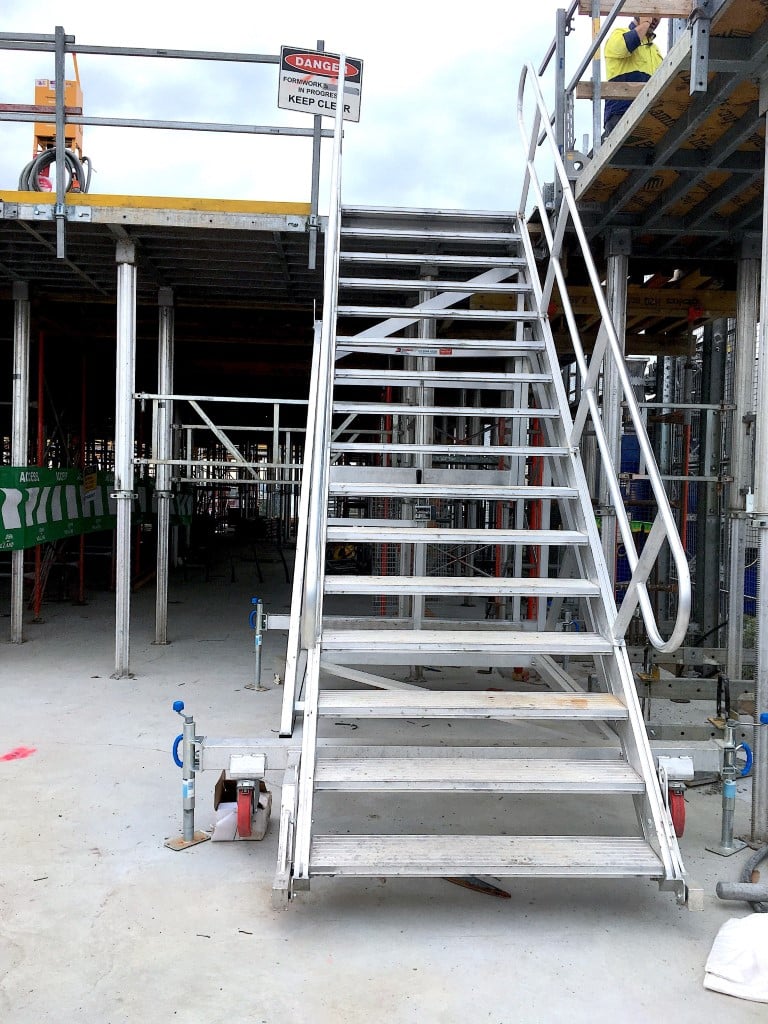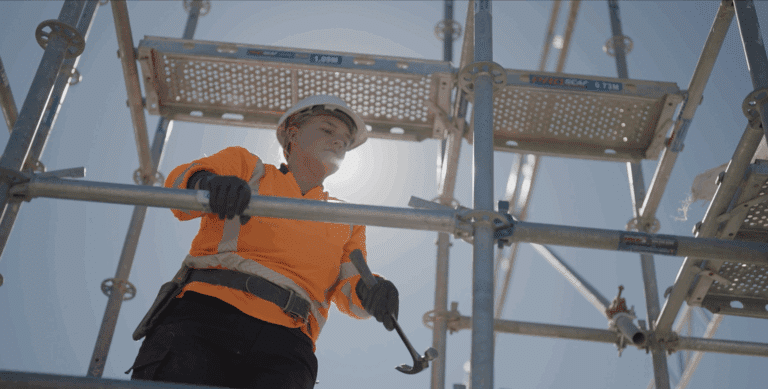
Ivanhoe Estate, the mixed housing improvement project by Frasers Property in Macquarie Park, NSW, is a collaborative venture with Mission Australia Housing to achieve a more integrated community in the area, rather than the traditionally separated socially-rented and privately-owned communities.
Since April 2018, the old and often long-vacant structures have been getting gradually demolished to make way for a better-planned and more liveable precinct, which will also include a new school, plus retail and services outlets.
In what will be a higher-density zone, several architecturally-designed multi-level apartment buildings are taking shape. Of course, with multiple levels, challenges can become apparent for height access for workers. Add to this the need for project deadlines to be met, and efficiency can be the one thing that jeopardises completion date and worker safety.
While permanent stair structures are yet to be built, contractor John Holland needed workers to be able to access different floors at any given time. Regular ladders were too unstable and not practical due to the ‘one at a time’ nature for use by personnel. And any ‘temporary’ timber system would have been labourious and time-consuming to install, tear down and redeploy.
John Holland commissioned portable height access manufacturer SafeSmart Access to investigate the issue and solve it. SafeSmart identified that in order to gain efficiency, the system would be better being wide enough to accommodate simultaneous two-way ascent and descent and be easy to adjust, so the top step would align exactly with the formwork deck, no matter what height.

SafeSmart designed and manufactured this at their own factory and delivered it to the site, where it can be easily craned via lifting lugs to any level of the project, hind-winched to align with the next level up and easily wheeled around byhand to similar stairwell voids, mezzanines and the like.
Keeping the client’s activities on site compliant was assured via the system’s compliance with AS/NZS 1657:2013. And with its self-supporting nature and fixing-free securing, the system required no additional componentry to be fully-operational.






